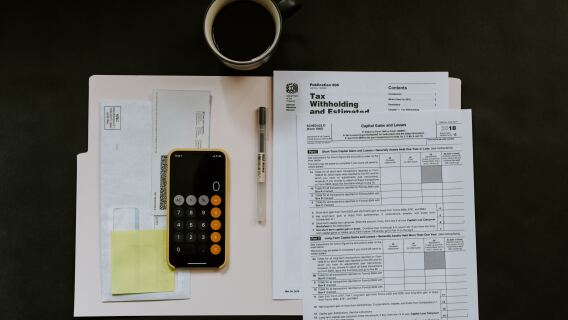With 2023 in the books, you’ve likely locked in whatever tax liability you’ll have come April. With a few exceptions aside (like IRA contributions), it’ll just be a matter of crunching the numbers and filing the paperwork. That said, if you find yourself with a bigger capital gains tax bill than expected, here are a few strategies to keep in mind for next year.
To review quickly, a capital gain is the profit you make from selling an asset (for our purposes, that asset is an investment, such as stocks). If you buy $1,000 in stocks, then sell them for $1,100, you have capital gains of $100. Simple enough, right? The capital gains tax, in this case, would be the taxes you own on that $100 profit. According to the IRS, the tax rate for most individuals is no greater than 15%. In our example, you would be taxed $15 on your $100 profit.
The other side of that coin, of course, is a capital loss. The silver lining here is that if you sell your stocks for a loss, you don’t owe any taxes. Naturally, the goal of investing is to make a healthy profit, which means you have to contend with the U.S. capital gains tax. However, there are some savvy ways to keep more of your profits and lower your taxes that are worth keeping in mind as you plan for the future.
[text_ad]
5 Tips for Lowering Your U.S. Capital Gains Tax Liability
1. Invest for the long term
Every time you cash in a stock for a profit, you generate a capital gain. If you hold a stock for less than a year, you will be socked with a short-term gain, taxed as ordinary income. But if you keep it for longer than a year, your gain will be taxed at the lesser long-term capital gains rate.
2. Take advantage of tax-deferred accounts
Investing in a tax-deferred account, such as a 401(k), 403(b), a SEP plan (for business owners) or IRA, allows you to stockpile your savings and defer payment of taxes on your dividends, interest or capital gains until you withdraw money from the account.
3. Put your money in the right place
Your investments that generate the highest taxable income—assets such as high-turnover mutual funds or Real Estate Investment Trusts (REITs), and taxable bonds—may be best suited for accounts that provide tax advantages, such as 401(k)s and IRAs. Alternatively, assets like munis, stock index ETFs, and long-term equity holdings—where taxes are minimized—would be better served in a taxable account.
4. Offset your income with losses
If you are holding a portfolio with several losing stocks, and the rest of your portfolio has given you some very nice gains, you may decide to “bite the bullet” and unload all the non-performers. The IRS allows you to offset ordinary income by using up to $3,000 of your excess loss. And if you have more losses than $3,000, you may carry them forward in future years. But please remember the IRS wash sale rule, which requires that you wait 30 days after selling a losing stock before you can buy it back at the discounted price.
5. Tax-Loss Harvesting
Tax-loss harvesting is also known as tax-loss selling, and it can get somewhat complicated, but the idea is fairly simple. Sell your poorly performing stocks at a loss to reduce your profits from selling successful stocks. This tax-loss selling tends to further depress the prices of underperformers, enticing investors to buy back the stocks they sold (after the 30-day waiting period).
There are several problems with this strategy, however. Tax-loss selling may impact portfolio diversification. It’s not unusual for an entire sector to be under pressure in which case all stocks showing a loss could be in the same area of the market. If you realize losses in all those holdings, you may be exiting an entire sector of the market, thereby reducing portfolio diversification and increasing risk.
And the biggest downside of tax loss selling is that the stock price may appreciate during the wash sale period causing the investor to lose more in potential gain than saved in taxes.
The U.S. capital gains tax is certainly a factor in developing your portfolio and determining which stocks to keep and which to sell. Just don’t forget to keep the big picture in mind.
What do you want to know about lowering your capital gains tax liability? Leave a comment below.
[author_ad]
*This post is periodically updated to reflect market conditions.
